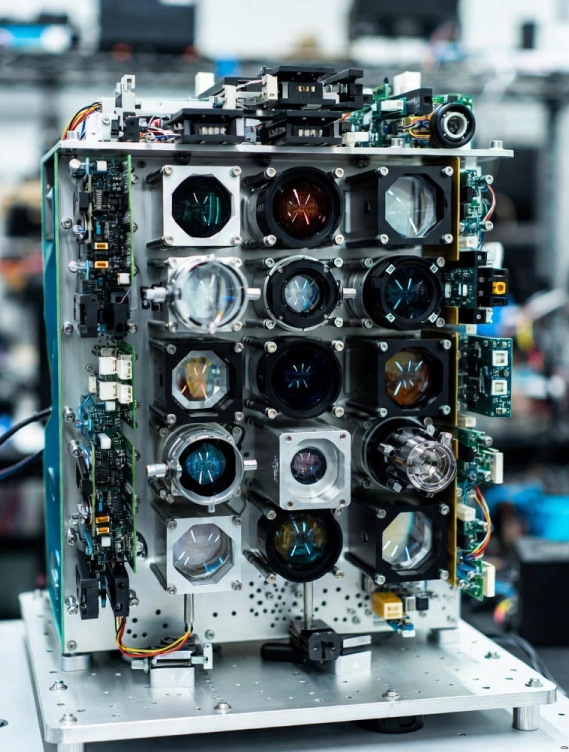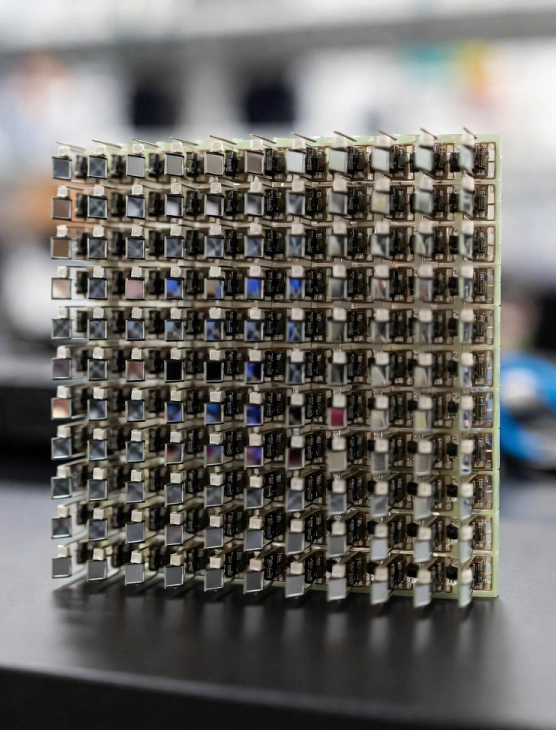For home theater enthusiasts, 4K DLP projectors have undoubtedly sparked a visual revolution, dramatically enhancing the viewing experience with unparalleled clarity and detail. Among the technologies driving the evolution of DLP projection from Full HD to Ultra HD (UHD), XPR (eXpanded Pixel Resolution) technology plays a pivotal role.
The Basics of DLP Technology
Before diving into XPR, it’s essential to first understand DLP® (Digital Light Processing) technology. Developed by Texas Instruments, its core is a semiconductor chip called a DMD (Digital Micromirror Device). This chip contains thousands of microscopic mirrors, each representing a single pixel. By precisely tilting these mirrors, the system can direct light either toward or away from the projector’s lens, creating an image on the screen. DLP projectors are renowned for their high brightness, excellent color accuracy, and reliability, making them widely used in applications from home theaters to large-scale events and movie theaters.
The Advent of 4K DLP Projectors and XPR
While we all crave a true 4K UHD picture, achieving native 4K resolution on a DLP projector faces a significant challenge. Manufacturing a DMD chip with over 8 million micromirrors—one for every pixel in a 4K image—would be incredibly complex and expensive.
XPR technology was created to solve this problem. This innovative technology allows projectors to use an existing 1080p DMD chip to cleverly display a 4K UHD image.
How XPR Works: Pixel Shifting
The core of XPR technology is a technique known as “pixel shifting.” The process can be broken down into three basic steps:
Increased Frequency: First, the Full HD (1080p) DMD chip is run at a much higher frequency—typically 240Hz, four times the standard 60Hz. This allows the chip to process four times the amount of information per second.
Image Decomposition: Next, a dedicated processor takes the incoming 4K signal (containing 8 million pixels) and splits it into four separate Full HD images (each with about 2 million pixels).
Pixel Shifting and Composition: The DMD chip projects these four Full HD images at an extremely high speed of 240 times per second. Simultaneously, an XPR module physically moves the position of each image by a minuscule, precise amount (horizontally and vertically) at a speed imperceptible to the human eye. In this way, the four frames are overlaid in different positions on the screen, ultimately combining to form a complete 4K image with 8.3 million distinct pixels. Because this happens so rapidly, the human eye perceives it as a single, seamless, and sharp image.

Advantages of XPR Technology
Cost-Effectiveness: By using pixel shifting, manufacturers can produce 4K projectors without needing to develop expensive native 4K DMD chips, making high-resolution projection more accessible to consumers.
Compact Design: Because they don’t require larger DMD chips and massive optical assemblies, DLP projectors with XPR technology can be designed to be more compact and lightweight.
Reliable Performance: XPR technology builds on the inherent durability and long lifespan of DLP technology, ensuring consistent, high-quality performance over time.
Factors to Consider
Precision Required: The installation and operation of the XPR module demand extremely high precision. Any minor inaccuracies could affect the final image clarity and contrast.
Contrast: The light path through the XPR module can result in a slight reduction in light control, which may lead to a modest decrease in the overall contrast ratio compared to a native 1080p projector.
Noise: Although modern XPR modules are designed to be very quiet, the internal moving parts will inherently generate a small amount of operational noise.
Conclusion
XPR DLP technology represents a significant advancement in the world of digital projection. Through its ingenious pixel-shifting method, it enables DLP projectors to deliver a stunning 4K resolution at a fraction of the cost and complexity of native 4K systems.
Today, XPR technology is widely used in all types of 4K projectors, from home theater models to professional and educational units. Whether you’re watching a blockbuster movie, giving a critical business presentation, or immersing yourself in a vibrant video game, XPR DLP projectors provide an exceptional viewing experience, allowing you to fully enjoy the magic of the ultra-high-definition digital world.




